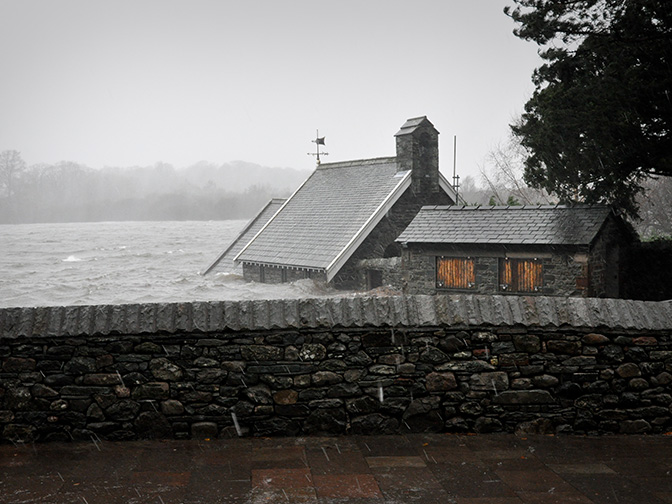

ECMWF presented recent work on hydrological hazards during the second General Assembly of the EU-funded IMPREX project, which took place at the Centre from 31 May to 2 June.
About 60 delegates from the 23 partner organisations took part in the meeting.
The IMPREX project focuses on the development of climate services for different hydrological sectors, including hydropower, flood protection, agriculture and river traffic.
Within the project, ECMWF is responsible for producing the data management plan, ensuring that data are disseminated between project partners. It is also contributing to the seasonal hydrological outlooks and verification practices, and it is investigating methods to improve the prediction of extreme hydrological events.
One example of recent progress concerns the development of new forecasting capabilities for extreme precipitation beyond a week.
Extreme precipitation events
Through IMPREX, ECMWF is contributing to improving awareness of extreme precipitation events.
In winter, heavy precipitation and floods along the west coasts of mid-latitude continents are largely caused by intense water vapour transport within extratropical cyclones.
Recent research has shown that forecasts of integrated water vapour transport (integrated vapour transport, IVT) have higher predictability than those of precipitation. Building on these findings, ECMWF scientists have been evaluating the ECMWF Extreme Forecast Index (EFI) for water vapour transport across Europe.

The chart shows the integrated vapour transport EFI product valid for storm Desmond on forecast day 1, initialised at 00 UTC on 5 December 2015. It shows very EFI high values, indicating a high risk of an extreme situation, over a large area from the Atlantic west of the UK to parts of Scandinavia.
The EFI was developed at ECMWF as a tool to provide forecasters with guidance on potential extreme weather events. It is constructed to highlight occasions when there is a significant shift in the forecast towards the extreme end of the model climate.
Results suggest that at short forecast lead times, the EFI for precipitation is more useful in identifying extreme events, but that in forecast week 2 (forecast days 9 and 10), the IVT EFI can be better at capturing extreme rainfall.
These studies suggest the potential for using IVT as a forecast diagnostic to provide earlier awareness of extreme hydrometeorological events.
Full details of the study are available in a Geophysical Research Letter published by the American Geophysical Union (AGU).
Practice-oriented tools and services
About 18 months into the four-year project, the General Assembly was mainly devoted to informing the consortium about the various modelling concepts and development steps in the project.
“IMPREX is designed to cover the long chain between the improvement of forecasting and projection tools on the one hand and their application in professional applications on the other,” explained Project leader Dr Bart van den Hurk (KNMI).

Delegates from the IMPREX partner organisations attended the Second General Assembly at ECMWF.
By combining expertise from both public and private sector, the IMPREX project consortium aims to bridge the gap that often exists between users and providers of hydro-climatic information. The goal is to substantially improve capabilities for forecasting hydrological extremes and their impacts at short to seasonal timescales.
Dr van den Hurk said: “ECMWF is one of the key partners in IMPREX for an obvious reason: it has a long track record in building and using application-oriented forecasting tools, and its products are routinely used by many hydrological institutions across Europe.
“Stakeholder consultation done in IMPREX systematically points to the desire to improve the lead time, skill or resolution of current forecasting schemes.”
Speaking of the challenges facing the project, Dr van den Hurk highlighted the need to tailor weather and climate model outputs to the decision support tools used in practice.
“The IMPREX team is highly motivated to work together across the many disciplines that are represented, and to make a contribution to the ever-evolving development of practice-oriented climate services,” he said.

(Top photo: Thinkstock/iStock)
